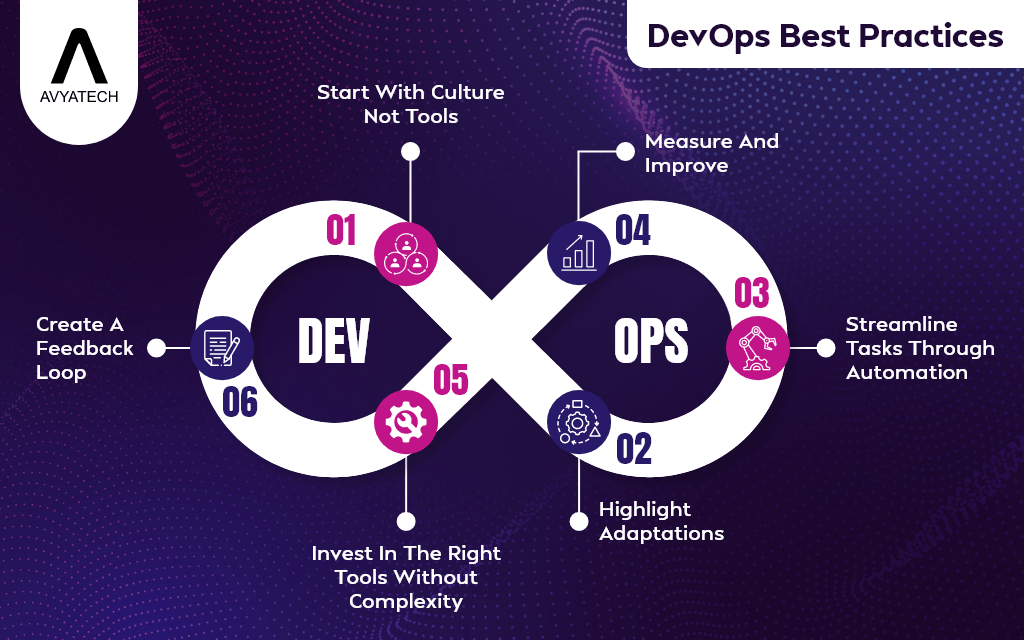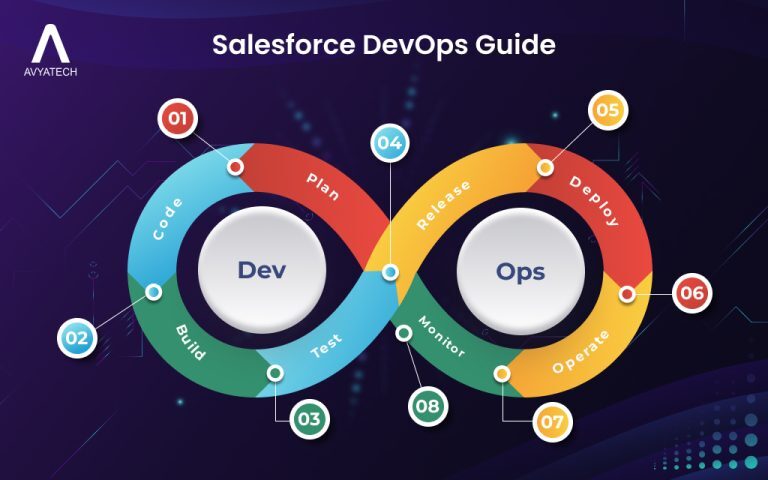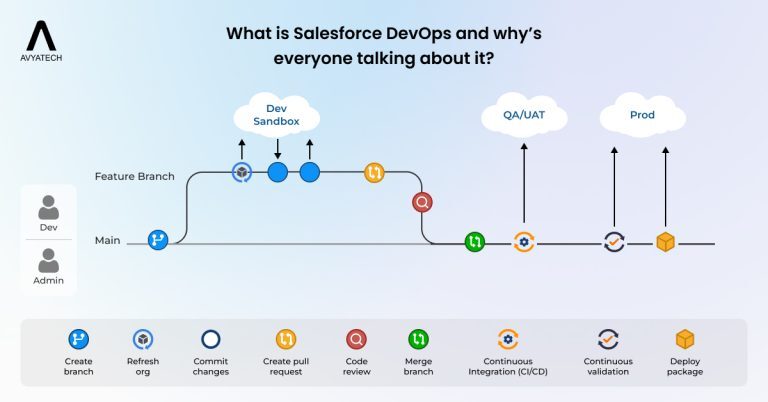DevOps practice is a unique way to bridge the gap between the development and operations teams by working on software delivery. The automation and process integration lift organizations to better team up with everyone associated with the SLDC ecosystem to release software in the least possible time. DevOps heightens continuous integration and continuous delivery. It boosts code testing with real-time deployment. Infrastructure as Code (IaC) is a smart way to make deployment faster and manage infrastructure via codes. Go through the content to better understand some of the best DevOps practices with practical tips that guide every software development professional in the right direction.
Effective DevOps Best Practices: Practical Tips for Success
DevOps practices reduce the friction and increase collaboration between development, test automation, and operations. Consequently, it speeds up software delivery. The idea of DevOps is much more than tools or automation. It builds a shared responsibility culture where teams work together toward a common goal. So, we list down a practical and human-focused guide that will help you set up and improve DevOps practically.
Start with culture; not tools
The biggest gaffe that a company can commit in its DevOps progression is emphasizing the tools. While tools can make your life easier, true DevOps success begins with the people. Develop a culture that promotes transparent communication, accountability, and collaboration between the development and operations teams. Here’s how:
Silos should be broken down: Both teams must not work in separation. To accommodate this, promote collaboration between them, whether it is in joint meetings with their counterpart or working on the exact same goal, and even going as far as to do team-building.
Foster an environment: Make teams feel comfortable when they learn new skills, experiment with methods, and face challenges. This encourages innovation and gradually improves processes. Without this attitude, even the most powerful tools won’t overcome obstacles.
Highlight adaptations
A core principle of DevOps centers around continuous integration (CI) and continuous delivery (CD). Instead of waiting months to launch an update, DevOps promotes changes that can be quickly tested and implemented. Here is why this strategy works:
- Momentum maintenance: Regular deployments keep the team motivated and engaged as they witness progress unfold in real time.
- Risk reduction: Smaller changes are easier to evaluate and fix. If an issue arises, you can pinpoint its exact origin.
- Speedy feedback: You can gather inputs from users and stakeholders more swiftly, enabling faster iterations.
To make this approach successful, include testing in your workflow. Take care of every small change completely before it enters the production flow.
Streamline tasks through automation
DevOps automation makes a real difference when teams automate tasks. This automation lets them get more time to concentrate on other tasks. It also plays a role in maintaining uniformity and minimizing mistakes. So, where should you begin with automation?
- Deployment: Leverage continuous deployment tools to seamlessly deploy approved code into production.
- Infrastructure: Adopt Infrastructure as Code (IaC) practices to handle infrastructure using scripts. This approach enhances the speed and reliability of deployments.
- Testing and building processes: Streamline the testing of code modifications to identify issues early on.
Keep in mind that it is best not to rush into automation. Begin with tasks that are time consuming or prone to errors before gradually broadening your automation efforts.
Measure and improve
DevOps is more like a journey than a quick fix. It’s important to assess how well your efforts are working and keep making improvements. Metrics can help you measure performance and make decisions. Just be careful not to drown in data; concentrate on the metrics that truly matter. Here are some key metrics to keep an eye on.
- Change failure rate: How frequently do changes cause issues or require rollbacks?
- Deployment frequency: How often do you roll out updates?
- Lead time for changes: How long does it take to move something from development to production?
- Mean time to recovery MTTR: When something goes awry, how swiftly can you bounce back?
Make it a point to review these metrics with your team regularly, pinpoint areas that need improvement, and tweak your strategies accordingly.
Invest in the right tools without complexity
Investing in tools is essential, but avoid making things too complicated. While culture and processes should take precedence, you’ll eventually require the tools to bolster your DevOps strategy. There are plenty of excellent options available for version control, CI/CD, monitoring, and automation. However, be cautious not to overcomplicate matters by juggling too many tools, especially in the stages. Consider these tool categories.
- CI/CD pipelines: Jenkins, GitLab CI, and CircleCI are excellent for streamlining the automation of builds and deployments.
- Infrastructure management: For managing your infrastructure as code, you can rely on tools like Terraform and Ansible.
- Monitoring and logging: You can bank upon Prometheus, Grafana, and the ELK stack. They are valuable resources to track system performance and address any issue swiftly.
- Version control: Git is a choice for managing code changes.
Create a feedback loop
Lastly, make sure to establish a strong feedback system. This involves collecting input from all parties involved, such as developers, operations, QA, and even users. The sooner you receive feedback, the quicker you can respond to it. Here is how to create effective feedback loops:
- Allocate time after major releases to evaluate successes and areas for improvement.
- Feedback mechanisms facilitate enhancement and assist in identifying issues before they escalate.
- Foster communication to ensure team members are at ease with sharing and receiving feedback throughout the entire process.
- Pay attention to user input, instead of solely depending on internal data. Look into users preferences and prioritize accordingly.
Conclusion
It takes time to implement DevOps strategies, but the benefits are definitely worth it. So, start small and scale gradually. Begin by prioritizing collaboration and fostering a positive culture. Make small and frequent adjustments and leverage automation to simplify tasks. Assess your progress, invest in tools, and maintain an open feedback loop. As you progressively expand your DevOps approach, you will witness quicker software releases, improved product quality, and more satisfied and motivated teams.




















































































